The best electric bike conversion kits 2025 and how to fit them
Add power to any bike at a fraction of the cost of a full machine with one of the best ebike conversion kits
Matt Ischt-Barnard
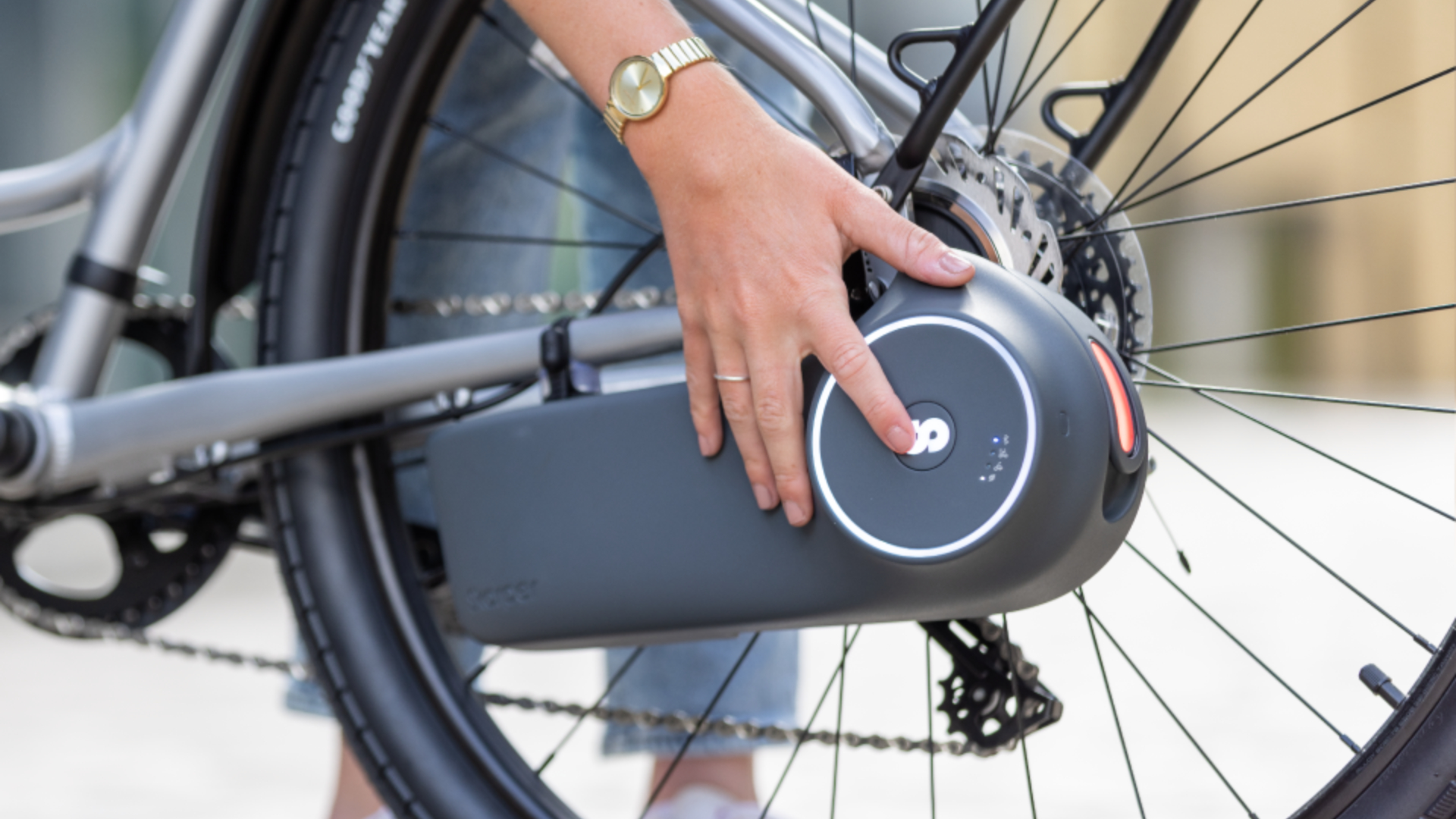
The best electric bikes have plenty going for them. They’re well-suited to a daily commute, with the motor making longer distances possible. So much so you might even be able to swap four wheels for two. Their popularity has also led to an array of options, from electric cargo bikes to lightweight e-road bikes, and plenty in between. But typically they don’t come cheap.
Which is where the best e-bike conversion kits come in.
If you don’t have the budget or space for a new electric bike, but you do have a working bike that’s longing for a new lease of life, then a conversion kit could be the answer. By fitting a motor to either the front or rear hub, or by adding a drive unit near the cranks, you can turn a rarely-used machine into a practical and sustainable solution for journeys that you previously might have taken on foot or by car.
While you may have read negative stories in the press about unsafe or even illegal e-bike conversion kits, you can rest assured that every kit featured in this guide is legal for use in the US and UK/EU. We’ve also tested each and every one, assessing them for their ease of set-up as well as their performance.
The Quick List
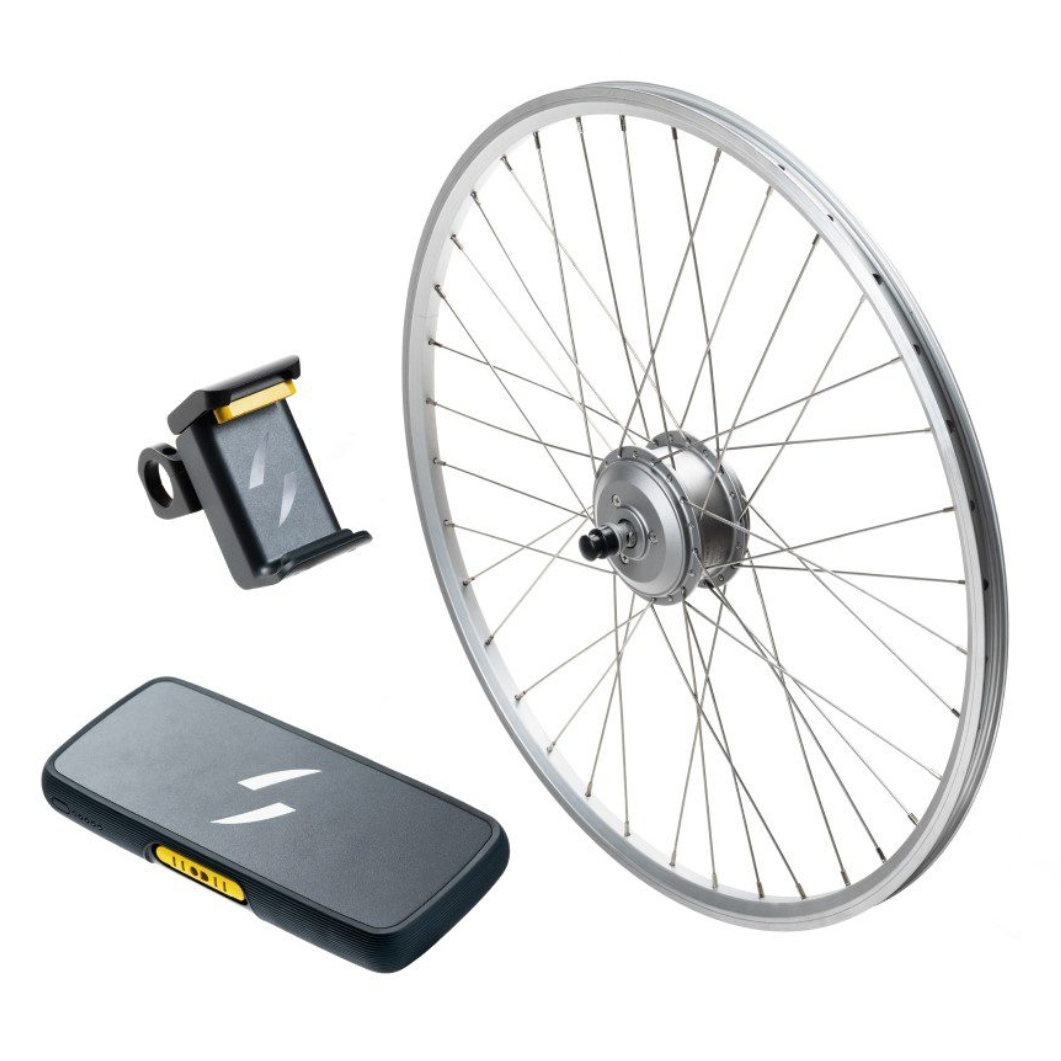
The Swytch kit is super simple: just swap out your front wheel, wire up the controller and battery and you're off. The battery is also very compact, allowing you to remove it from the bike easily to carry with you.
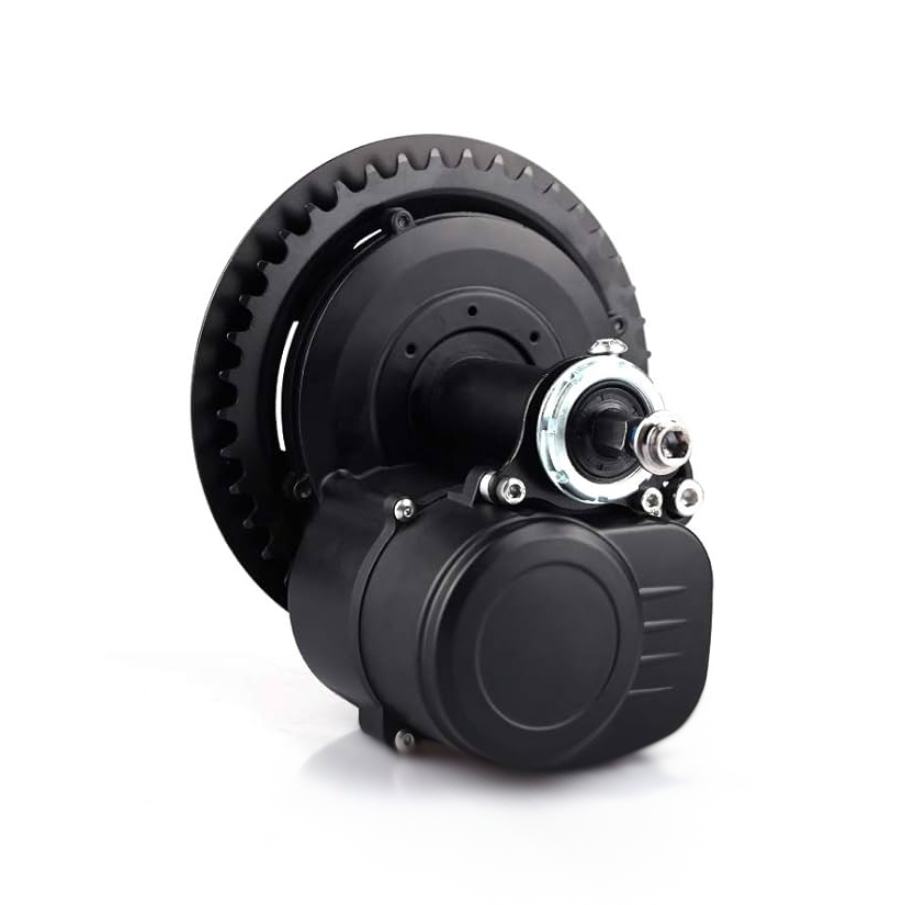
The TongSheng kit positions the motor at the centre of the bike, so it will fit to a wide range of designs. It's lightweight for its high torque and power output, although you'll need to buy the battery separately.
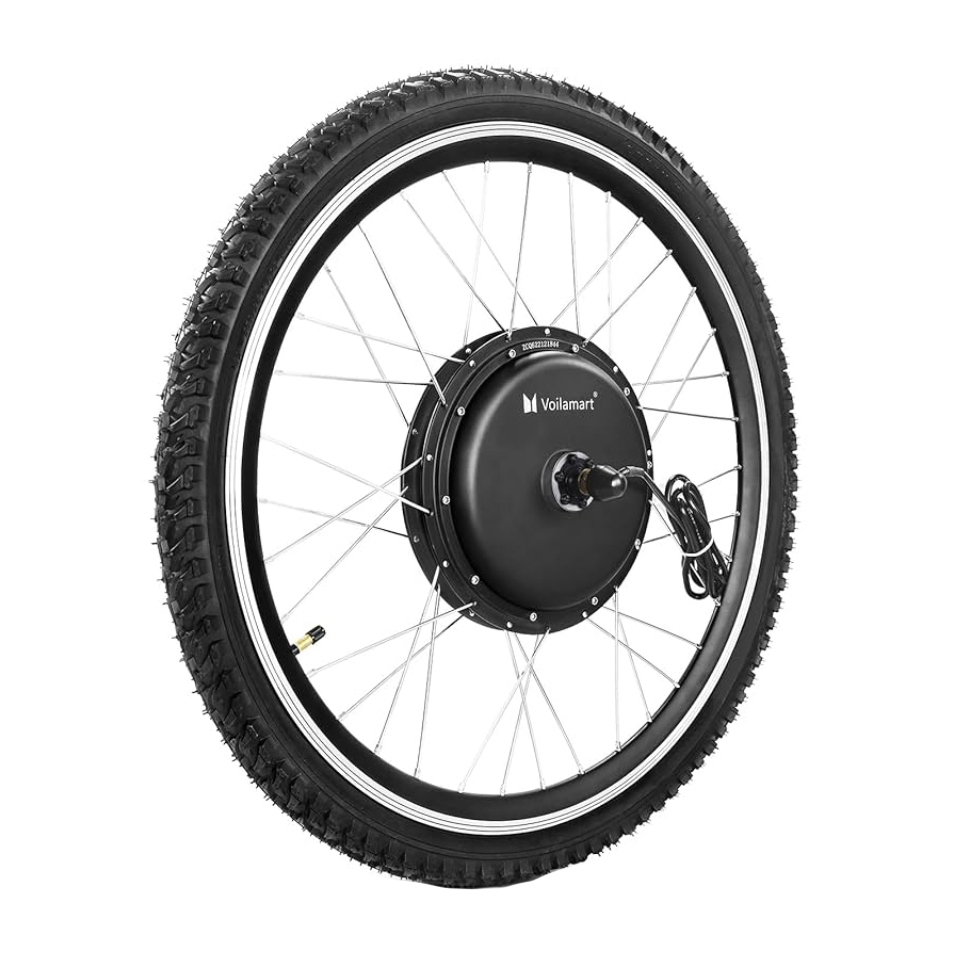
The Voilamart kit is an inexpensive rear wheel conversion option, although you'll have to source a battery separately. It's slightly fiddly to fit as well and requires additional waterproofing if you plan to ride in wet weather.
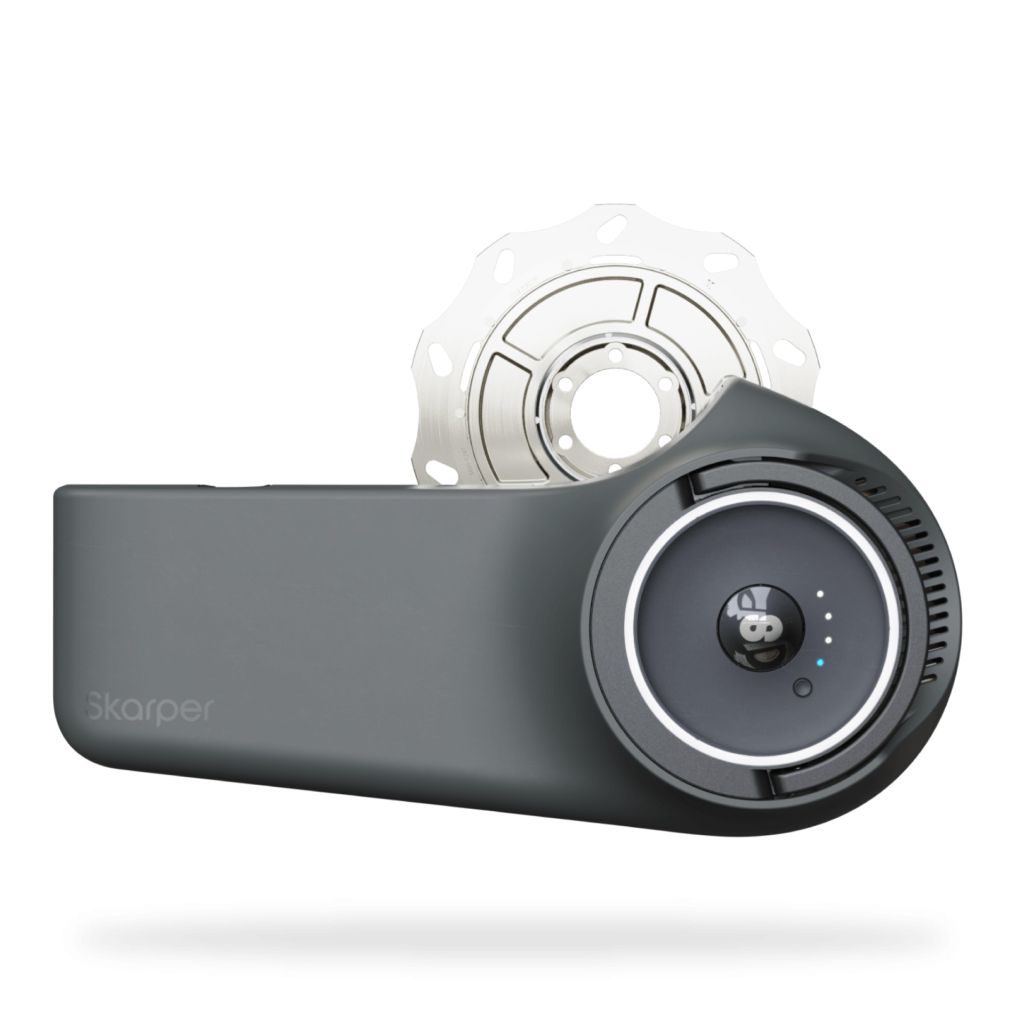
The Skarper DiscDrive has effectively beaten the system and offers one of the widest compatibilities of any ebike system; it also helps it is incredibly easy to fit and feels very strong out on the road.
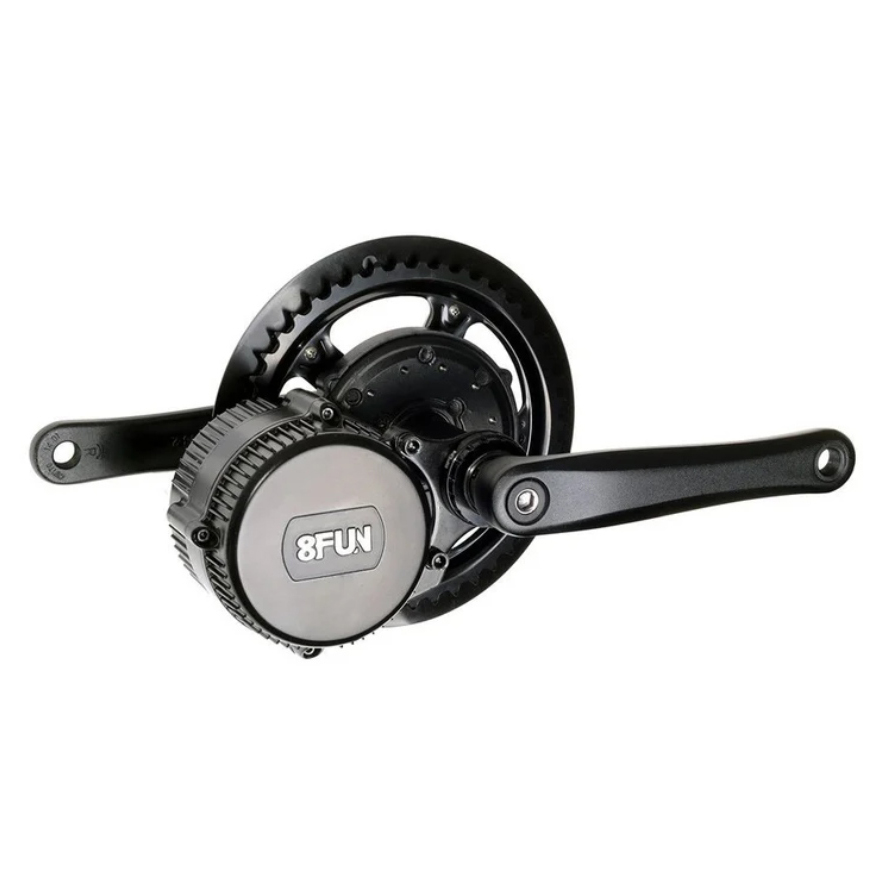
By adding power at the cranks, the Bafang mid motor kit allows the use of any wheels and can deliver more torque. However, the motor's position limits clearance and you will need to source your own battery.
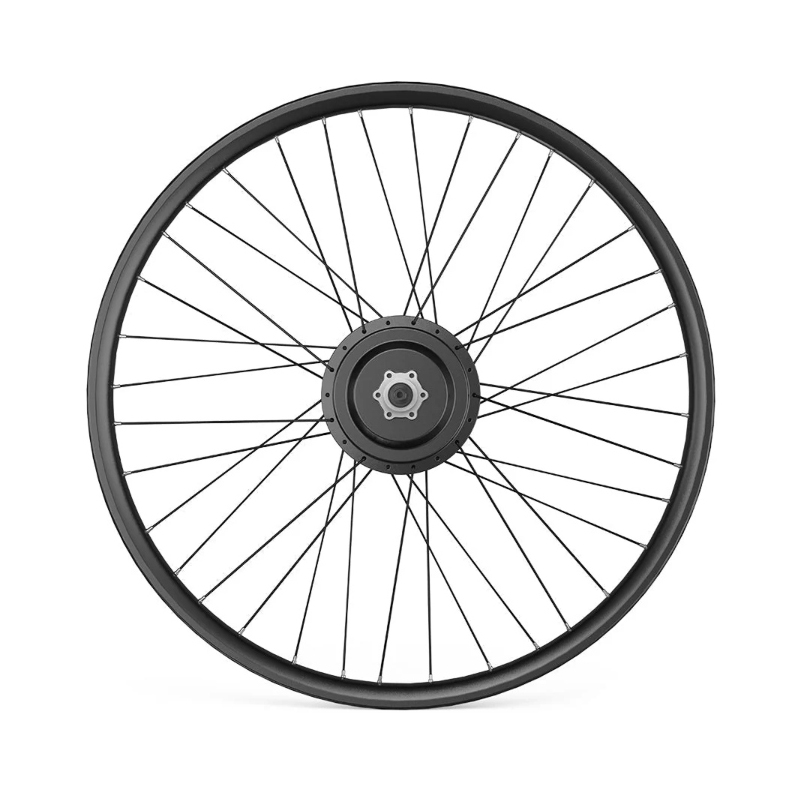
Available in different size options, the Bafang front hub motor kit replaces the bike's front wheel. It's decent value but can be fiddly to set up correctly.
The Best Electric Conversion Kits 2024: Our picks
Best Overall
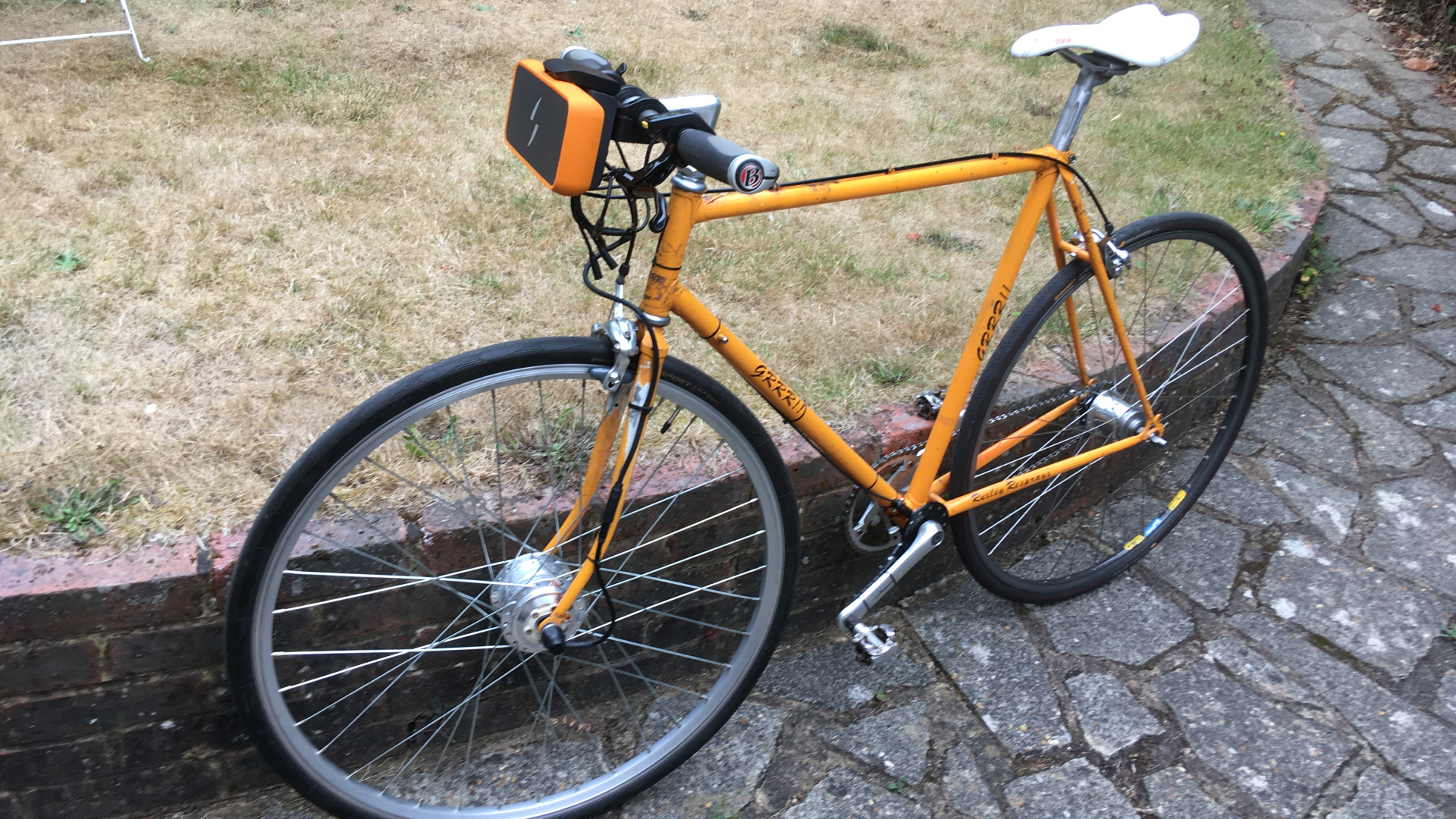
The Swytch e-bike conversion kit is compact, light and easy to fit
Specifications
Reasons to buy
Reasons to avoid
If a conversion kit that’s simple and straightforward to set-up is a must, then the Swytch system is worthy of your consideration. During our testing we had it fitted in around half an hour.
The updated kit benefits from a smaller and lighter battery pack, whether you choose the Air battery that delivers a stated 15km range and weighs just 700g, or the Max battery, which is heavier, at 1.1kg but is designed to provide twice the range. Both use the same handlebar mount and can be used with the original motor and pedal sensor, allowing existing users to upgrade the battery.
As for the motor, it’s added to the front hub. We tested it on both a lightweight two-speed steel bike and a heavier hybrid. It worked a dream on the former, turning it into a fast and responsive ride that was well-suited to trips into and around town. The battery life was also impressive. After 20 miles of use on the medium assist level we had only used two of the five bars.
On the heavier hybrid we used the Max battery and took it on a few more testing rides. Here we found that the battery delivered a little less range than the promised 30km, illustrating that weight of bike and terrain are clearly important factors when it comes to e-bike battery life.
All told, we’d recommend the Swytch system for those who desire, or need, a kit that’s easy to fit. There’s even great customer support to help you fit the system should you need it.
Read our full Swytch eBike Conversion Kit review
Best mid-drive
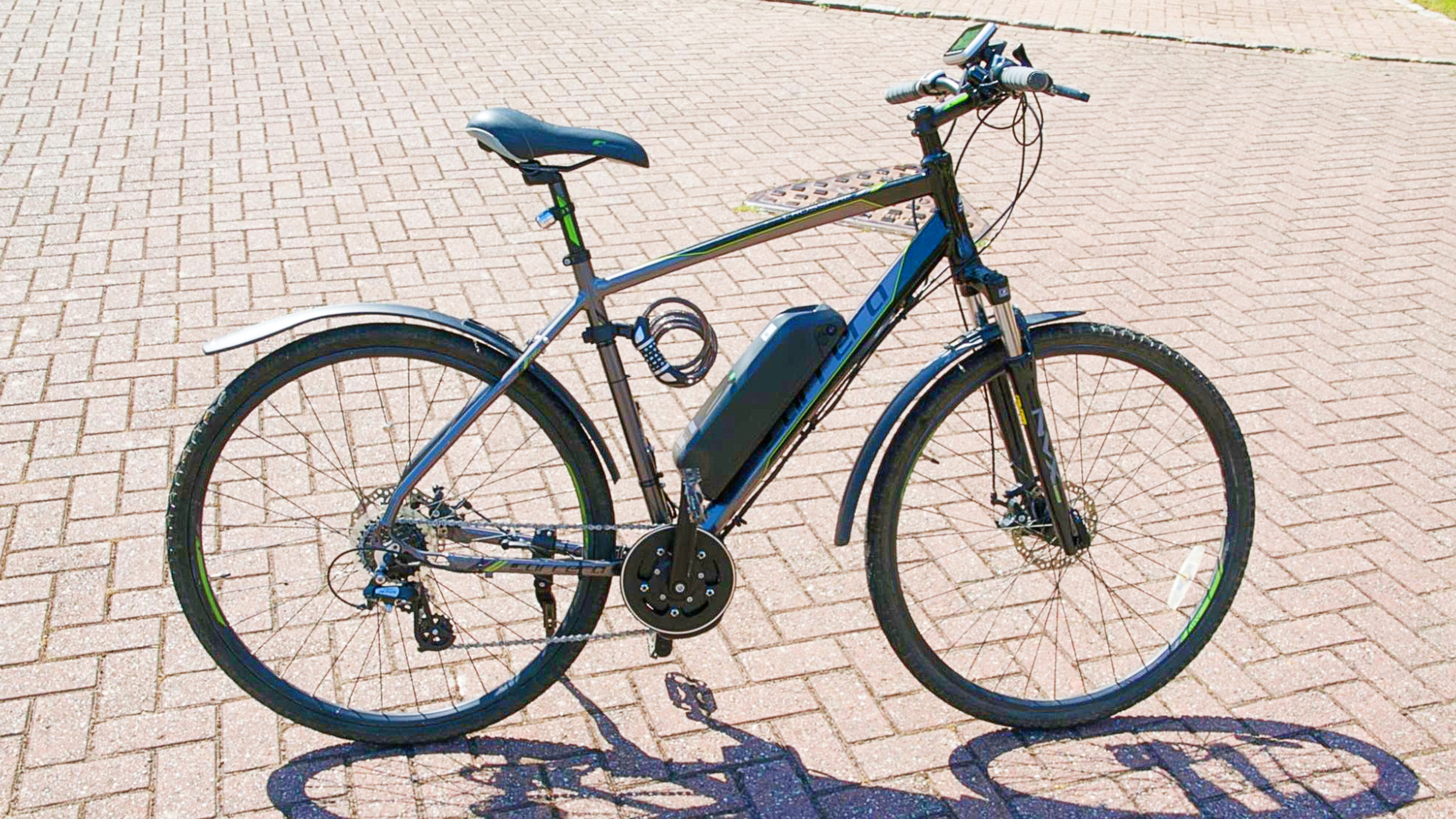
You can choose your own battery to go with the TongSheng mid-drive motor
Specifications
Reasons to buy
Reasons to avoid
The TongSheng gets our nod as the best mid-option we tested. It’s reasonably lightweight and is compatible with a wide range of bikes.
The kit doesn’t come with a battery, which does mean you’ll need to buy a 36v version. Our experience tells us that around 10Ah will give a range of 29km / 18mi, whereas a 18Ah will increase this to around 53km / 33mi. We recommend Green Cell batteries.
Installing the kit was relatively easy. Like the majority of mid-drive systems it requires you to remove your existing crank and chainrings with the ones supplied. There’s also a LCD display that attaches to the handles bars. And of course, you’ll need to hook up the battery you’ve bought to the motor.
We found that in use the high-torque made it well-suited to more challenging routes and terrain. With this in mind we’d recommend it as a good solution for those who are required to tackle hills with regularity.
Read our full TongSheng TSDZ2 ebike conversion kit review
Best Budget

A rear wheel swap adds a hub motor with the Voilamart kit
Specifications
Reasons to buy
Reasons to avoid
A budget option, the Voliamart is a rear wheel kit that’s fairly easy to fit but does require you to install not only the replacement rear wheel that contains the motor, but also new brake levers, control screen, throttle, control box and pedal sensor. The latter we found a little fiddly and does mean you have to remove the crank to fit it.
Like the TongSheng kit above, it doesn’t come with a battery, so you’ll need to source and buy this for the kit to work. Another potential downside is the lack of waterproofing for the connectors that link to the control unit; during installation we opted to buy a plastic enclosure, cut the wires to length, solder the connections and then heat shrink for added protection.
Out on the road, we were impressed with the power that the rear hub motor delivered. We were less struck with the pedal sensor, which only detects that you’re turning the pedals rather than just how hard you’re turning them. The result is an immediate surge of power, so make sure that you adjust the level of assistance accordingly - there are five levels available.
If you’re shopping on a budget and have a good degree of mechanical competence then the Voliamart kit is a good way to get rolling electrically without having to break the bank.
Read our full Voilamart e-bike conversion kit review
Best for compatibility
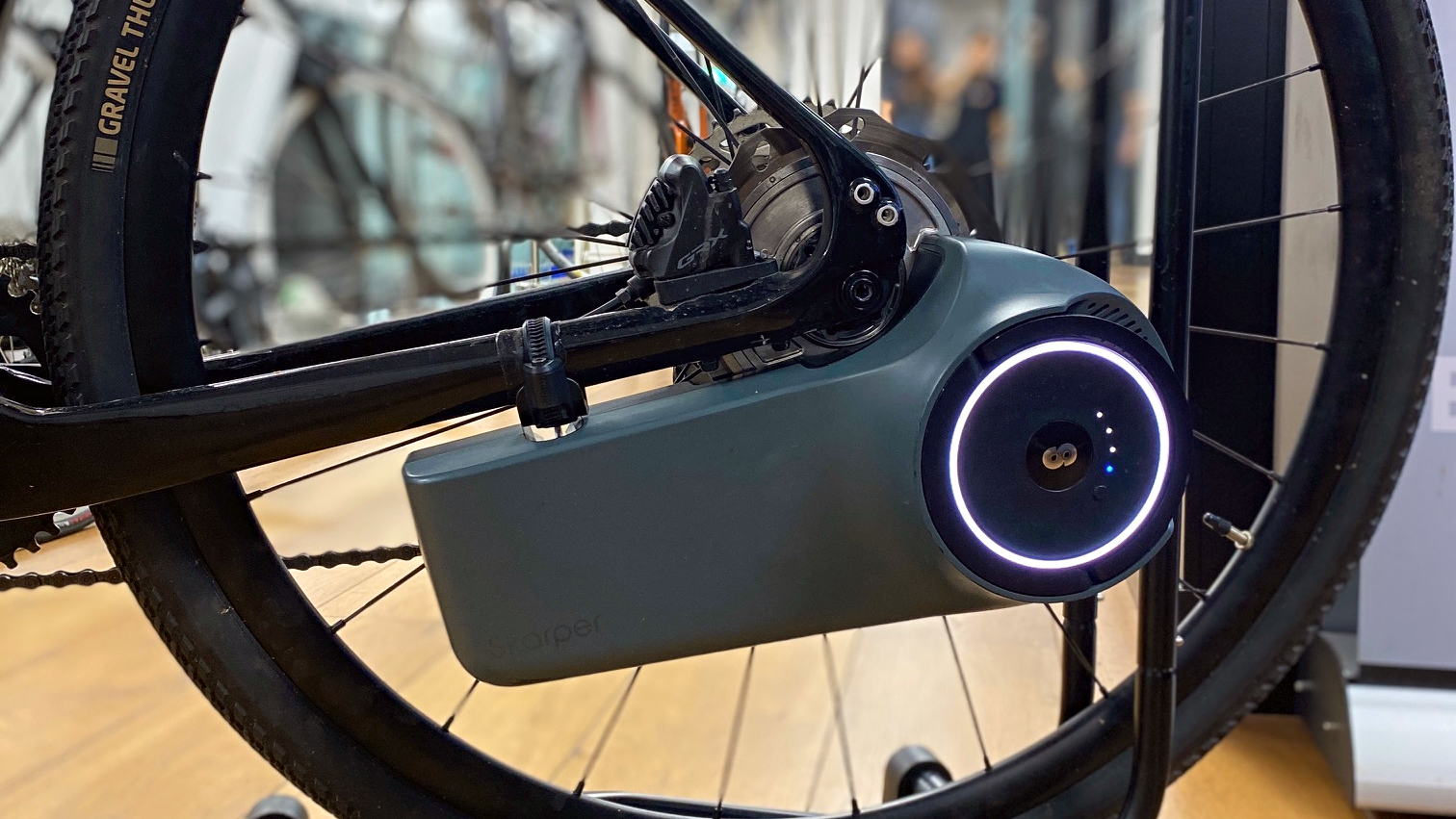
4. Skarper DiskDrive ebike drive system
Our expert review:
Specifications
Reasons to buy
Reasons to avoid
Skarper’s ‘clip-on’ system helps to negate potential compatibility issues as it works with any disc-brake bike. The design also means it’s quick and easy to fit; the ease of set-up really impressed us.
We were fortunate enough to put the Skarper through its paces in the company of its co-founder Uri Meirovich. The route we took was largely flat aside from a short but fairly sharp hill that allowed us to put the unit’s turbo mode to the test. And it delivered. The gradient didn't trouble the performance, with little to no noticeable drop-off, even when nearing the assistance cut-off. That it did this in the middle of a torrential downpour made it even more impressive! Back on the flat roads we resorted to eco mode, which served to further demonstrate the considerable power that the turbo option provides.
The downside to the Skarper is largely to be found in its price. While it’s cheaper than a rear-hub driven e-bike it’s far more costly than the other kits in this guide. That said, if you want a system that you can use on a number of your disc-brake bikes then it does provide something pretty unique.
Read my first ride review of the Skarper ebike drive system
Best for off-road
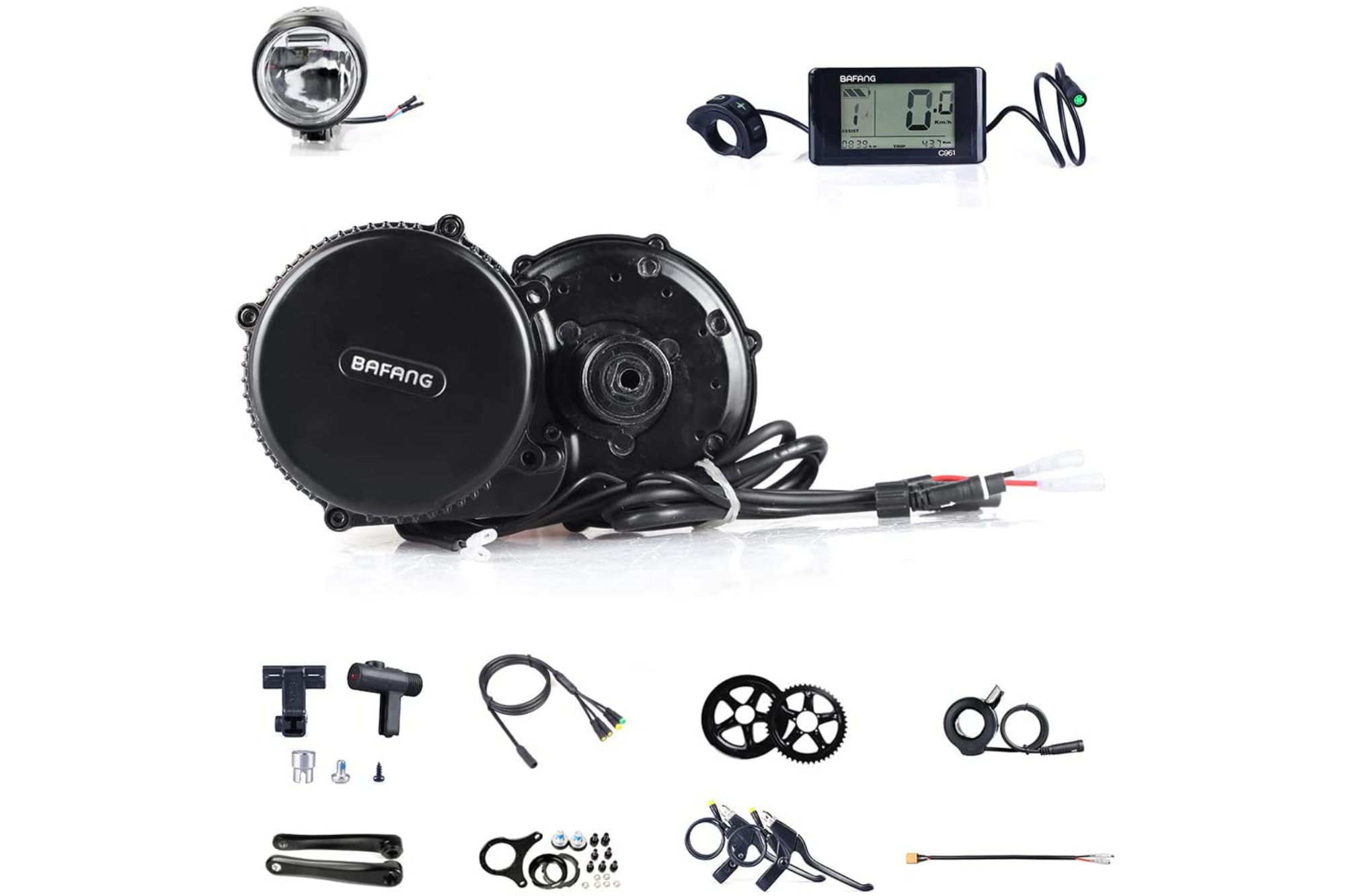
The Bafang motor provides 80Nm torque
4. Bafang Mid Motor Kit
Specifications
Reasons to buy
Reasons to avoid
Another mid-motor kit, the Bafang offers a few potential benefits over systems that locate the motor in the front or rear hub.
The first of these is compatibility. With the Bafang, or any crank-drive system, you don’t have to worry about ensuring that the wheel is the right size, the axle is the correct width and that your brake type will work with the conversion kit. As long as you have an aluminium frame and a bottom bracket that measure 68mm to 73mm, then you’re good to go.
Secondly, by positioning the motor with the cranks, more torque is generated, which means more power. We really noticed this on steep and uneven terrain, making the Bafang a good option for those who want to take their converted e-bike off-road.
Again, like a couple of other kits we’ve featured in this guide, the Bafang system requires you to buy a battery to accompany the kit. We’d suggest a 36V as anything with a higher voltage can damage the system’s motor. Depending on your requirements, a 10Ah or 18Ah capacity should give you all the range you need.
Best budget front hub

The Bafang front hub motor makes for quick set-up
6. Bafang front hub motor kit
Specifications
Reasons to buy
Reasons to avoid
Bafang also offers a front hub conversion kit and it gets our vote as the best budget option for this style.
It’s less bulky than a mid-drive option and this particular kit can be bought without a battery, but better still, with a power pack. There’s a choice of Ah (amp hours) options as well as where you fit the battery, either on the downtube or on a rear rack, which makes this a good option for a range of riders and bikes.
We found that installing this system was pretty straightforward. As with most front-wheel kits, you need to set up the wheel with a disc rotor, tyre and inner tube before attaching the cadence sensor, which reads when you're pedalling and when you require assistance. Attach the battery and the LCD display and you're ready to roll.
It's worth bearing in mind that although this conversion kit comes in many different wheel sizes, it is only compatible with bikes that have a front disc brake and a Quick-Release axle. If your disc brake bike is a newer, more expensive model, it might not be compatible, so worth checking first.
How to convert your bike to an e-bike in four steps
Here's our step-by-step guide to how to add an electric bike conversion kit to your pedal-powered bike.
1. Swap the tyre and tube
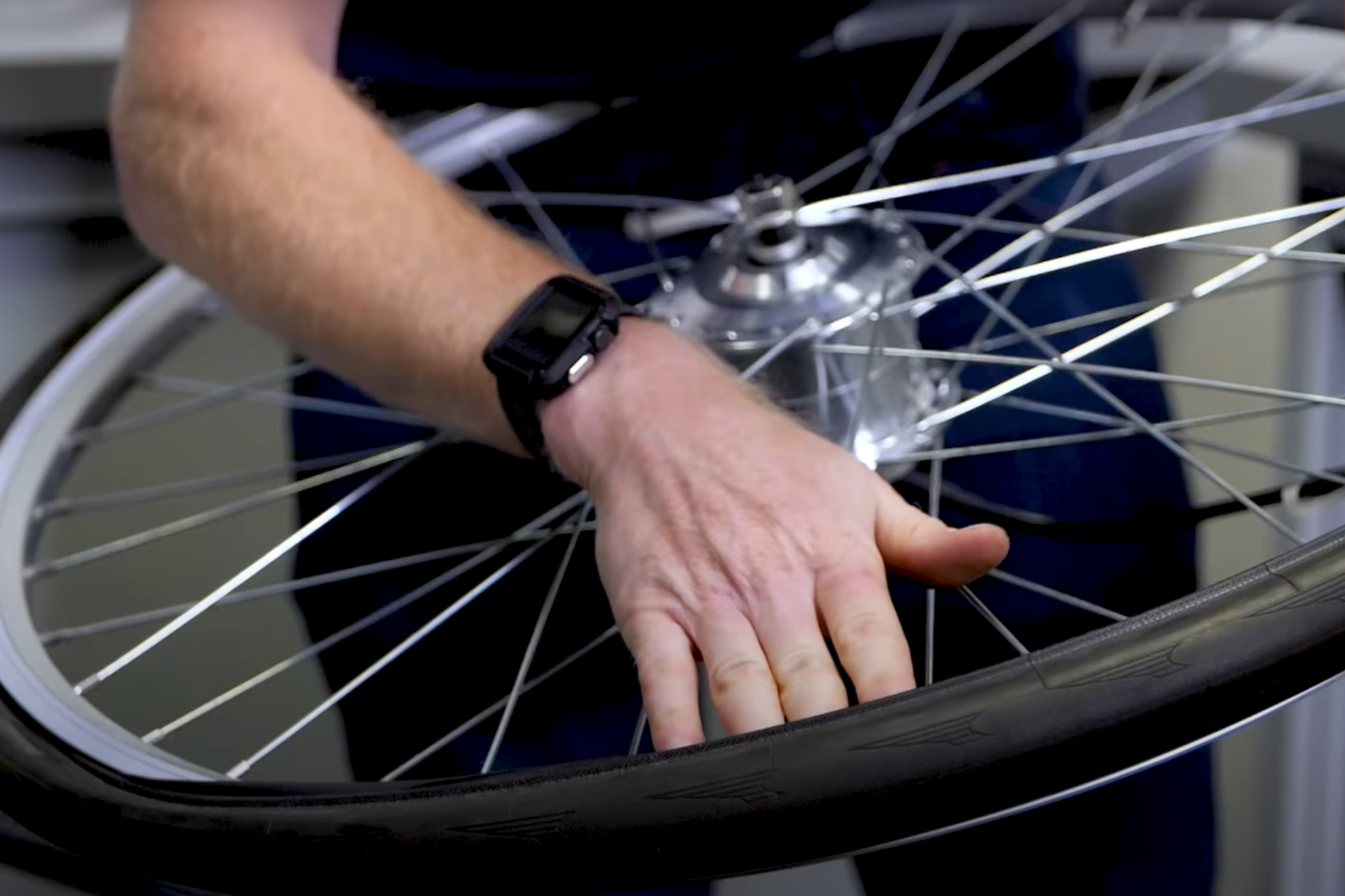
First remove your tire and tube
Firstly, remove the tyre and tube from your current front wheel and then install them on the new wheel from the kit. Make sure to check if the tyre is directional, if it is, ensure that the tyre is mounted so that the cable sticking out of the hub is on the left-hand side (non-drive side) when the wheel is installed in the bike – otherwise, it’ll be powered in the opposite direction to your direction of travel!
To swap the tyre and tube over, you will need some tyre levers and a pump.
The final points are to do up the nuts on the wheel’s axle to keep it firmly in place in the forks and to check that the brakes are correctly adjusted for the new wheel.
2. Attach the bracket to the handlebars
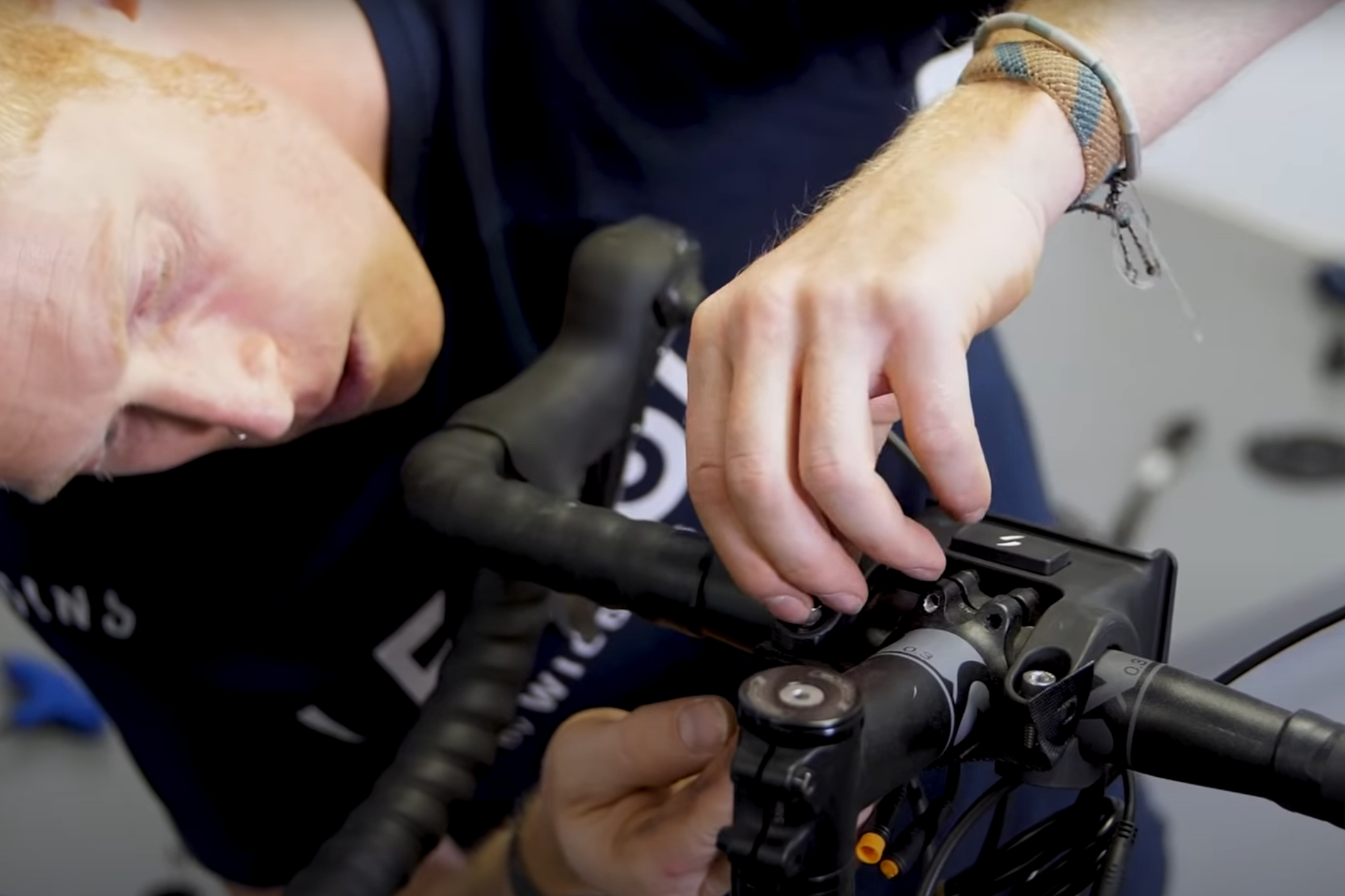
Next attach the bracket to the handlebars
There is a strap that needs to be attached to the bars to keep the bracket in place and stop it from rotating around. There are also some adaptors included in the kit which can be used if your handlebars are a little skinnier.
But essentially all that’s needed to be done here is a couple of screws to clamp the bracket tightly to the bars.
3. Attach magnet disc and sensor
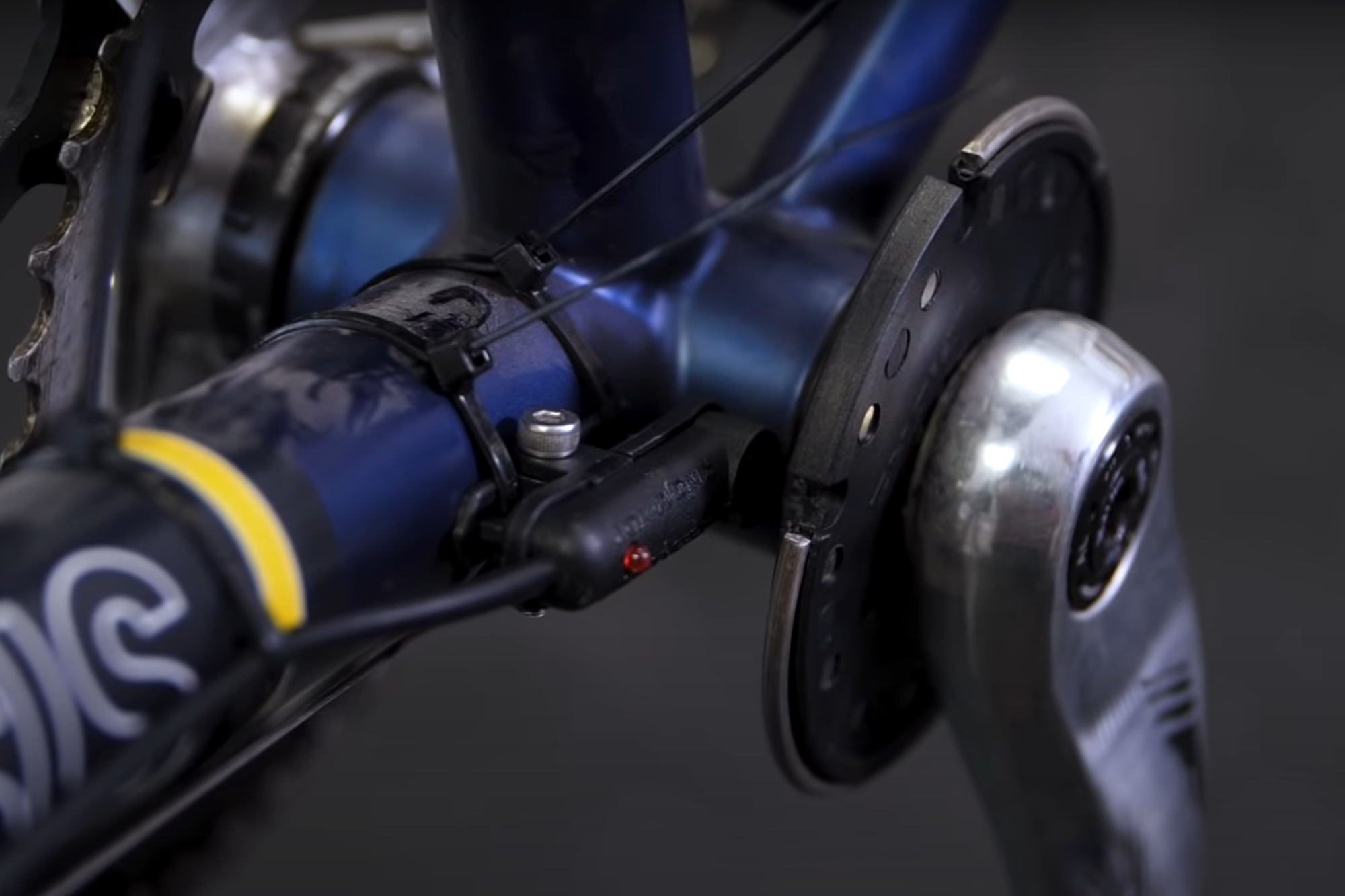
Attach the pedal sensor unit to the bike
The magnet disc has a split design so it can just clip around the inside of the left (non-drive side crank) and is then held in place by its retention ring. Next, stick the sensor on the frame directly in line with the magnets – this will ensure that the sensor can tell when the cranks are moving.
4. Plug in the cables
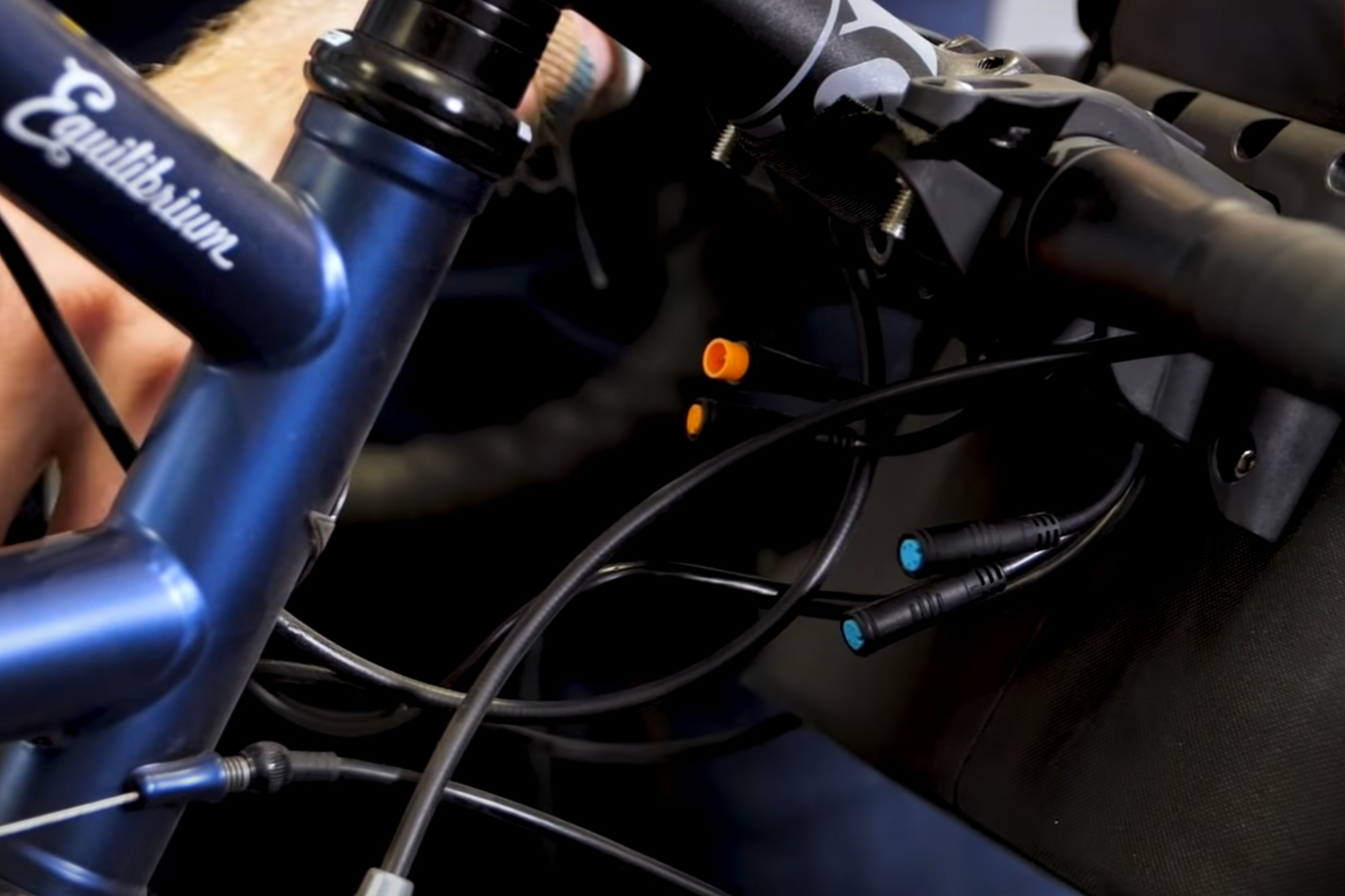
Finally wire everything up
The thickest one is the main power cable and that just needs to be plugged into the cable extending from the hub. The other orange cable attaches to the cadence sensor and this just needs plugging in as well.
It’s then a good idea to use some cable ties to tidy up the lengths of the cables a little bit, so they aren’t flapping about and risk getting caught on the spokes or on the cranks.
The blue cables, you don’t need to worry about, these are for an optional brake sensor upgrade kit.
How to choose
There’s a wide range of e-bike conversion kits, which means choosing the right one for you requires some forethought. To help you we’ve listed some of the main considerations when it comes to selecting a system that’s right for you.
Location of the motor
As you’ll have seen from this guide the motor can be located on the front or rear wheel, as well as a mid-drive option. If you’re after a greater amount of torque (measured in Nm) then a mid-drive system that positions the motor at the cranks is probably the best option; these kits are a good match for off-road riding or hilly commutes.
Battery
Some conversion kits require you to buy the battery separately, so that’s something you’ll need to consider. We’d recommend buying a battery from a reputable brand such as Green Cell and not choosing a voltage that might risk damaging the motor; 36 volts is a safe bet.
Even if you don’t have to buy a battery, you’ll want to choose a kit that delivers enough range for your requirements. Remember, these range guides are estimates and the weight of your bike, the terrain you ride and the mode you ride in all contribute to just how quickly the battery’s power is used.
Compatibility
If you’ve dug an old bike out of the shed or garage with a view to convert it into an e-bike, you’ll need to match its specs with the right kit. Check the bike’s wheel size, the axle width and the type of brakes before you buy a kit.
Conversely, if you’re looking to convert a newer model, then you’ll also need to check that the kit will work with disc brakes, thru-axles and other contemporary standards.
Ease of fitting
If you plan on fitting the conversion kit yourself, you’ll need to choose a system that’s well matched to your mechanical prowess. As illustrated in the reviews, some kits are far easier to install than others. Some kits require you to remove a wheel, others the crankset and more. Make sure you have the tools and the know-how before you start. If you’re looking for the easiest system to fit, the clip-on model from Skarper is likely the best bet, but it does come with a far higher price tag than most other conversion kits. Which brings us on to…
Budget
As with any bicycle component and accessory, there are a range of price options for e-bike conversion kits. While there are some budget options that we’d recommend, and we’ve selected a couple in this guide, it’s important to check on the legality and safety if you're shopping for more affordable options. You’ll need to figure in the additional cost of a battery for many of these options, too.
Why convert your bike to an e-bike?
What types of conversion kit are available?
You can get conversion kits that power your front or rear wheel or power the bikes via the cranks.
Wheel-based systems usually have a hub motor and require the replacement of your existing wheel with a compatible motorised one.
The alternative is a system like the Rubbee that drives your wheel by pushing on the tyre. Tyre wear can be an issue here though.
Finally, some systems power the e-bike via the bottom bracket.
Usually, the e-bike's battery will bolt onto your frame or be attached to your handlebars, although sometimes you can fit a battery pack to a rear rack.
We've more on compatibility - which can be an issue - below.
How much does it cost to convert a bike to an e-bike?
Prices vary depending on the type of conversion kit and the size of the battery. To give a rough band, you can expect to pay a total of between £500 and £800 from a reputable brand, but there will be outliers at either end.
Is it worth converting a bike to an e-bike?
There are many reasons to upgrade your bike to offer a little e-assistance. On the one hand, it can greatly increase the usefulness of your bike, enabling you to replace short car journeys – such as around town, to the shops, or to work – with going by bike instead.
It’s a lot more environmentally friendly getting about on two wheels than in a two-ton metal box. It can also save you time – bikes can take more direct routes and are less affected by traffic, as well as eliminating the need to search for a parking space at the other end.
But beyond just their practical benefits, e-bikes can also be a potent tool for boosting your fitness. Consistency is key when it comes to exercise, so making commitments with friends is a great way to ensure you’re heading out the door. Previously, differing fitness levels could make it difficult to find a riding partner but with an e-bike levelling the playing field, getting in a productive workout (for both of you) with a friend is much easier to do.
Added to that, an e-bike can be much more motivating in that it opens up a far greater range of roads than you’d be able to access just under the power of your own two legs. Exploring new roads is part of the fun of riding a bike and an e-bike can help preserve that.
Can you convert any regular bike to an e-bike?
Most bikes can be converted to an e-bike – it just requires getting the matching the right conversion kit to match the specification.
For conversion kits where the motor is located at the wheel’s hub, you’ll need to consider the wheel’s diameter, the width and axle standard of the hub and whether it uses rim or disc brakes. For instance, a 700c (AKA, 28”) disc brake wheel with a 100mm wide quick-release hub is a relatively common spec. Once you’ve determined what type of wheel you need, the conversion is quite a straightforward process
Crank-driven systems are generally easier in terms of determining compatibility; the requirements are typically just an alloy frame and a bottom bracket width of between 68 and 73mm – which is the standard for all road and mountain bikes, it’s only specialist bikes that have a different spacing there. In replacing the crankset, these systems are a bit more involved to fit than a hub system, but still well within the remit of a home mechanic.
Other kits, such as those that directly drive the rear tyre, have almost universal compatibility – provided your tyres aren’t too heavily treaded.
Are electric bike conversion kits any good?
You won’t be getting the very best motors and the largest, seamlessly integrated batteries with an e-bike conversion kit. But with that said, e-bike conversion kits are much cheaper than purchasing a whole new e-bike and they do deliver many of the same benefits.
Converted e-bikes are great for commuting and utility cycling, giving that extra boost to help flatten hills, motor along the flat and lug about heavy loads. E-bike conversions are also good for leisure cycling, helping to moderate your effort level as needed and greatly extending the range you can explore.
For more specialist utility needs, buying a new cargo e-bike would help boost your carrying capacity and range. Equally, for the aesthetically conscious, the latest breed of e-road bikes are almost indistinguishable from a non-powered bike at first glance. Then again, both those options are much more expensive than a conversion.
Do e-bike conversion kits affect the bike's warranty or legal status?
Short answer: It depends.
If you're buying a brand new bike, there's a possibility e-bike conversion kits will void the original manufacturer's warranty as you're technically 'modifying the bike's original components'. But chances are you'll be fine as long as you don't return your bike with the conversion kit on. It's very easy to remove a conversion kit and restore the bike to factory condition.
As for legal status, this varies according to your local e-bike legislation. In the UK for example, you can ride an electric bike as long as you're 14 or over and the electric motor is within the maximum power and speed requirements. We'd definitely advise researching the e-bike laws in your area before purchasing a conversion kit.
How we test
Where we've been able to link to a review, it means that we've put the e-bike conversion kit through its paces. We've assessed how easy it is to fit and maintain as well as other factors such as the quality of the components, battery life and charge time. Riding the bike once fitted with the kit, we've taken into account the ride quality, the ease of use and the battery range.
Where we haven't yet had the chance to review an item, we're still confident in recommending it as one of the best, because we either know the brand really well and have probably tested another product or the previous version and can still happily recommend it as one of the best.
The latest race content, interviews, features, reviews and expert buying guides, direct to your inbox!
Rob has been Content Director of Cycling Weekly - and stablemates Bikeperfect, Cyclingnews.com and MBR - since May 2021. Before that he spent two years in similar role at Bikeradar, which followed 12-years as Editor-in-chief of Cycling Plus magazine and eight years at Runner's World. In his time as a cycling journalist he's ridden from London to Paris at least twice, London to Bristol once, completed the Fred Whitton Challenge, L'Etape du Tour and Maratona dles Dolomites. He's also jumped into the broom-wagon at La Marmotte and Oetzaler Radmarathon.
- Matt Ischt-BarnardEcomm and Tech Writer